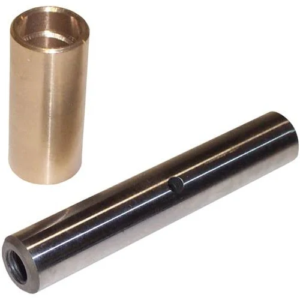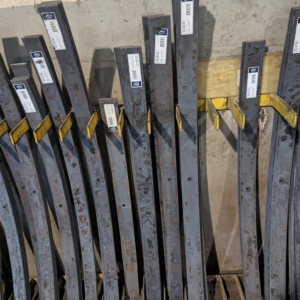Introduction to Truck Suspension Systems
The suspension system is a critical component in any vehicle, especially in trucks that are designed to carry heavy loads and travel over various terrains. The primary function of a truck’s suspension system is to maximize friction between the tires and the road surface, ensuring steering stability, good handling, and comfort for the passengers.
Definition and Purpose of a Truck Suspension System
A truck suspension system is an intricate network of components, including springs, shock absorbers, struts, control arms, and ball joints, working together to support the vehicle’s weight, absorb and dampen shock, and help maintain tire contact with the road.
Overview of Different Types of Suspensions
Trucks utilize several types of suspension systems:
- Solid Axle Suspensions: Often found in older or more rugged vehicles due to their simplicity and durability.
- Independent Suspensions: Allow each wheel to move independently, providing better ride quality and handling.
- Air Ride Suspensions: Utilize airbags instead of traditional springs, offering adjustable stiffness and load leveling capabilities.
For a deeper understanding of these systems, resources such as the Heavy Duty Truck Systems by Sean Bennett provide comprehensive insights into the mechanics of truck suspensions (Bennett, S. (2015). Heavy Duty Truck Systems. Cengage Learning.).
Types of Springs in Truck Suspensions
Springs are at the heart of a suspension system, and there are several types used in trucks, each with its unique characteristics.
Description of Various Spring Types
- Leaf Springs: Composed of several layers of metal bound together, they are known for their strength and are commonly used in heavy-duty applications.
- Coil Springs: Helical springs that compress and expand to absorb the motion of the wheels.
- Air Springs: Inflatable bellows that can be adjusted for varying loads and conditions.
- Torsion Springs: Use the twisting properties of a steel bar to provide coil-spring-like performance.
Each spring type has its advantages and disadvantages, which are well documented in technical articles and manufacturer guides like those from Hendrickson, a leader in the global heavy-duty suspension market (Hendrickson. (n.d.). Truck Suspension Systems.).
Pros and Cons of Each Spring Type
Leaf Springs:
Pros: Durability, high load capacity, and low maintenance.
Cons: Can lead to a harsher ride compared to other types.
Coil Springs:
Pros: Provide a smoother ride and better handling.
Cons: Not as robust as leaf springs for carrying very heavy loads.
Air Springs:
Pros: Adjustable stiffness and damping, improved ride quality.
Cons: More complex and can be more expensive to repair.
Torsion Springs:
Pros: Compact and can be mounted longitudinally or transversely.
Cons: Typically not suitable for the heaviest loads.
The Function of Springs in Suspensions
Springs play a vital role in the overall functionality of the suspension system.
How Springs Absorb Shock
When a truck encounters uneven road surfaces, the springs compress and decompress, absorbing the energy from bumps and potholes. This action helps to maintain consistent tire contact with the road surface, which is essential for safe vehicle operation.
The Role of Springs in Weight Distribution and Vehicle Stability
Springs also contribute to proper weight distribution across the vehicle’s chassis. They ensure that the truck maintains balance when loaded, which is crucial for vehicle stability during acceleration, braking, and cornering.
For further reading on the dynamics of truck suspensions, the Society of Automotive Engineers (SAE) offers detailed papers and standards that can be accessed through their website (SAE International. (n.d.).).
Signs of Spring Wear or Failure
Recognizing the signs of wear or failure in suspension springs is key to maintaining truck safety and performance.
Common Indicators That Springs Need Maintenance or Replacement
- Decreased handling or increased ride harshness.
- Uneven tire wear, which may indicate poor alignment due to sagging springs.
- Visible damage such as broken or cracked springs upon inspection.
Neglecting these signs can lead to premature tire wear, reduced fuel efficiency, and even unsafe driving conditions.
Maintenance Tips for Suspension Springs
Regular maintenance is essential for the longevity and reliability of your truck’s suspension springs.
Optimal Maintenance Strategies for Suspension Springs
To ensure the longevity and reliability of your truck’s suspension springs, consider adopting these essential maintenance practices:
- Regular Inspections: Make it a habit to check for any signs of damage or wear that could compromise the integrity of your springs.
- Lubrication: Apply lubricant to moving parts as needed to fend off rust and minimize component degradation.
- Spring Replacement: Always replace springs in matched pairs to maintain uniform performance and handling across your vehicle.
While adhering to the manufacturer’s maintenance recommendations is crucial, there’s no substitute for professional expertise. At Canada Suspension Specialists, we offer comprehensive services tailored to your specific needs, ensuring your truck operates safely and efficiently. Trust our skilled technicians to keep your suspension system in peak condition.
Innovations in Suspension Technology
The trucking industry continues to benefit from technological advancements in suspension systems.
Recent Advancements in Spring Materials and Design
Manufacturers are exploring new materials like carbon fiber and advanced composites to create lighter, stronger springs. Additionally, computer-aided design (CAD) has led to more efficient and effective spring shapes and configurations.
How Technology is Improving Suspension Systems and Vehicle Performance
Technological innovations such as electronic control systems are being integrated into suspensions, allowing for real-time adjustments based on load and road conditions. These smart systems enhance ride quality, reduce wear on components, and improve fuel economy.
To stay updated on the latest trends and technologies in truck suspensions, industry publications like Transport Topics offer a wealth of information (Transport Topics. (n.d.). Equipment & Maintenance.).
Secure Peak Performance with Expert Suspension Care
In conclusion, the springs within your truck’s suspension system are pivotal to its safety, efficiency, and overall performance. Regular maintenance and timely repairs are not just recommended; they’re imperative for the well-being of your heavy-duty vehicle.
Don’t leave the condition of your truck to chance. Entrust your suspension needs to the seasoned professionals at Canada Suspension Specialists. With our dedicated service, you can drive confidently, knowing that every component is tuned to perfection for the long haul.
Stay informed and ahead of the curve by prioritizing the health of your truck’s suspension system. Regular checks and maintenance are not just about performance; they’re about safety and efficiency on the road. Make the wise choice—keep your suspension system in prime condition.
Keep Your Truck Running Smoothly with Canada Suspension Specialists
Stay ahead of the curve and ensure the health of your truck’s suspension system with regular checks and maintenance. It’s not just about maintaining performance—it’s about ensuring safety and efficiency on every journey. Make the wise choice for your heavy-duty vehicle. Contact Canada Suspension Specialists today to keep your suspension system in prime condition.



